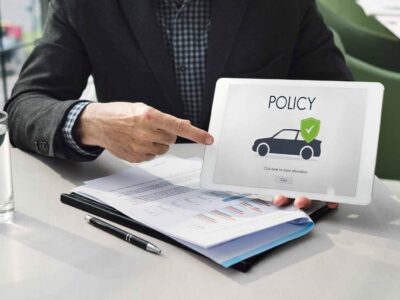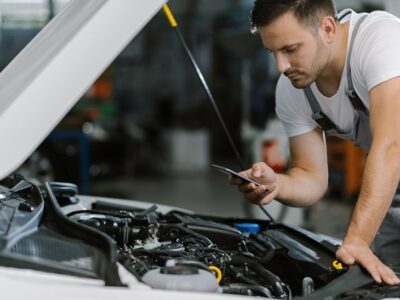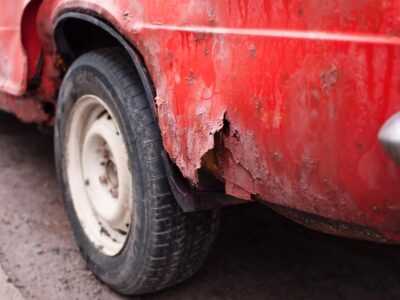After a collision, the visible damage to a vehicle’s exterior might be the first concern for both you as a car owner and your insurance company. However, there is a lurking threat that often goes unnoticed: rust and corrosion. While the initial impact of a collision can be visually striking, the subsequent development of rust and corrosion can lead to long-lasting repercussions. These hidden adversaries can compromise not only a vehicle’s appearance but also its structural integrity, safety, and resale value.
Why is thorough post-collision inspection essential for identifying rust and corrosion damage?
more a collision, the immediate concern often revolves around repairing visible damage, but a comprehensive post-collision inspection conducted by auto body professionals is equally, if not more critical. Such inspection goes beyond addressing the cosmetic aspects and delves into the underlying issues that can have long-lasting consequences. Ignoring potential structural and functional damage can result in hidden dangers that compromise both the safety and longevity of a vehicle.
Rust, often considered a cosmetic nuisance, is far more than just surface-level blemishes. It is a corrosive process that eats away at a vehicle’s metal components, weakening their strength and durability over time. Corrosion, on the other hand, is a broader term encompassing the gradual deterioration of materials through chemical reactions with the environment. When a collision damages the protective layers that shield a vehicle’s metal surfaces, these surfaces become vulnerable to moisture, salt, pollutants, and air—all essential components for rust and corrosion to thrive.
How do rust and corrosion occur post-collision?
Collisions can inflict damage beyond what meets the eye. A vehicle’s protective coatings, such as paint and rust-preventive layers, can be compromised during an impact. Even seemingly minor dents or scratches can expose the underlying metal to the elements. This exposure sets the stage for rust and corrosion to take hold. The protective coatings not only provide a barrier against moisture and environmental pollutants but also prevent metal-to-metal contact that can accelerate corrosion. When these coatings are damaged, the natural electrochemical processes responsible for rust and corrosion are expedited. Moisture and pollutants can then penetrate these areas, setting off corrosion that spreads beneath the surface. Even tiny paint chips resulting from a collision can expose the metal to a corrosive environment. These chips act as entry points, allowing moisture and pollutants to reach the metal. The corrosive process can start beneath the paint and remain hidden until the damage becomes extensive.
How is rust and corrosion damage repaired?
Addressing rust and corrosion damage after a collision requires a systematic approach that combines precision, expertise, and the right tools. Collision repair professionals thoroughly inspect the affected areas to assess the extent of rust and corrosion damage. The goal is to determine whether the damage is superficial or if it has compromised the structural integrity of the vehicle. Before any repairs can take place, the affected areas need to be prepared. Techniques like sanding, grinding, or cutting out the affected metal might be necessary to eliminate rust down to a clean surface.
In cases where rust and corrosion have severely damaged structural components or panels, welding or replacement might be necessary. Skilled professionals can weld new metal sections into place or replace entire panels to restore the vehicle’s structural integrity. This step is vital for safety and ensuring the vehicle’s stability.
After rust removal and necessary repairs, the affected areas need to be primed, painted, and clear-coated. For seamless integration, blending and buffing techniques are used to ensure that the repaired area seamlessly blends with the surrounding surfaces. Professionals will examine the repairs for accuracy, durability, and appearance.
Why consider professional rust and corrosion repair?
Repairing rust and corrosion requires a combination of expertise, precision, and the right materials. It is recommended to entrust this process to experienced professionals who understand the intricacies of auto body repair. When dealing with rust and corrosion repair, especially after a collision, professional help is strongly recommended. The risks associated with improper DIY techniques can lead to extensive damage that might be costlier to fix in the long run.
Addressing rust and corrosion post-collision demands a proactive mindset. Ignoring these issues can have far-reaching consequences, compromising safety, aesthetics, and vehicle value. By taking timely action, through professional services you can safeguard your investments and ensure that your vehicle remains reliable and visually appealing for years to come. In the end, the road to preventing and repairing rust and corrosion is a path toward preserving not just the vehicle itself, but also the peace of mind of its owner. By choosing vigilance and engaging in proper care, you can conquer the silent threats and enjoy the open road with confidence.













Comments